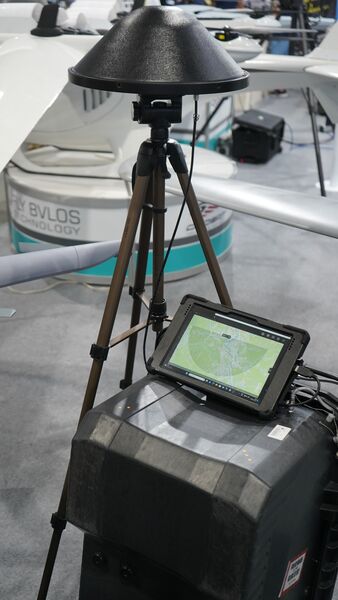
DDD (Drone Detective & Disabilitating System), pictured above from TADTE 2023, can detect UAVs within a range of 25 km. (Janes/Kapil Kajal)
Taiwan's GEOSAT Aerospace & Technology signed a transfer of technology (ToT) agreement with Fortunio Japan to manufacture the latter's counter-unmanned aerial vehicle (C-UAV) known as ‘DDD (Drone Detective & Disabilitating System)' in Taiwan at the Taipei Aerospace & Defense Technology Exhibition 2023 (TADTE 2023) held in Taipei from 14 to 16 September.
A GEOSAT spokesperson told Janes at the showthat the system will be offered to the Republic of China (RoC) Armed Forces to meet the service's C-UAV requirements.
According to the company specifications, the DDD can detect UAVs within a range of 25 km.
The DDD comprises three units: detection head unit, tripod, and software and personal computer. The circular detection head unit is mounted on the tripod with an overall height and weight of 1,430 mm and 35 kg respectively.
The height, weight, and diameter of the head unit are 150 mm, 7 kg, and 375 mm respectively. The system can be mounted on a ship or a military vehicle, the spokesperson added.
Apart from the DDD, GEOSAT signed an agreement with French company Cavok UAS at the show to mass produce CK50-T vertical take-off and landing (VTOL) aircraft in Taiwan.
Under the agreement, GEOSAT will be responsible for the sale of CK50-T in the Asia-Pacific region, Fabrice Parodi, CEO of Cavok, told Janes at the show.
Parodi said that the GEOSAT will offer CK50-T to the RoC Navy for intelligence, surveillance, and reconnaissance operations. In April GEOSAT signed an agreement with Cavok to develop CK50-T.
Looking to read the full article?
Gain unlimited access to Janes news and more...
